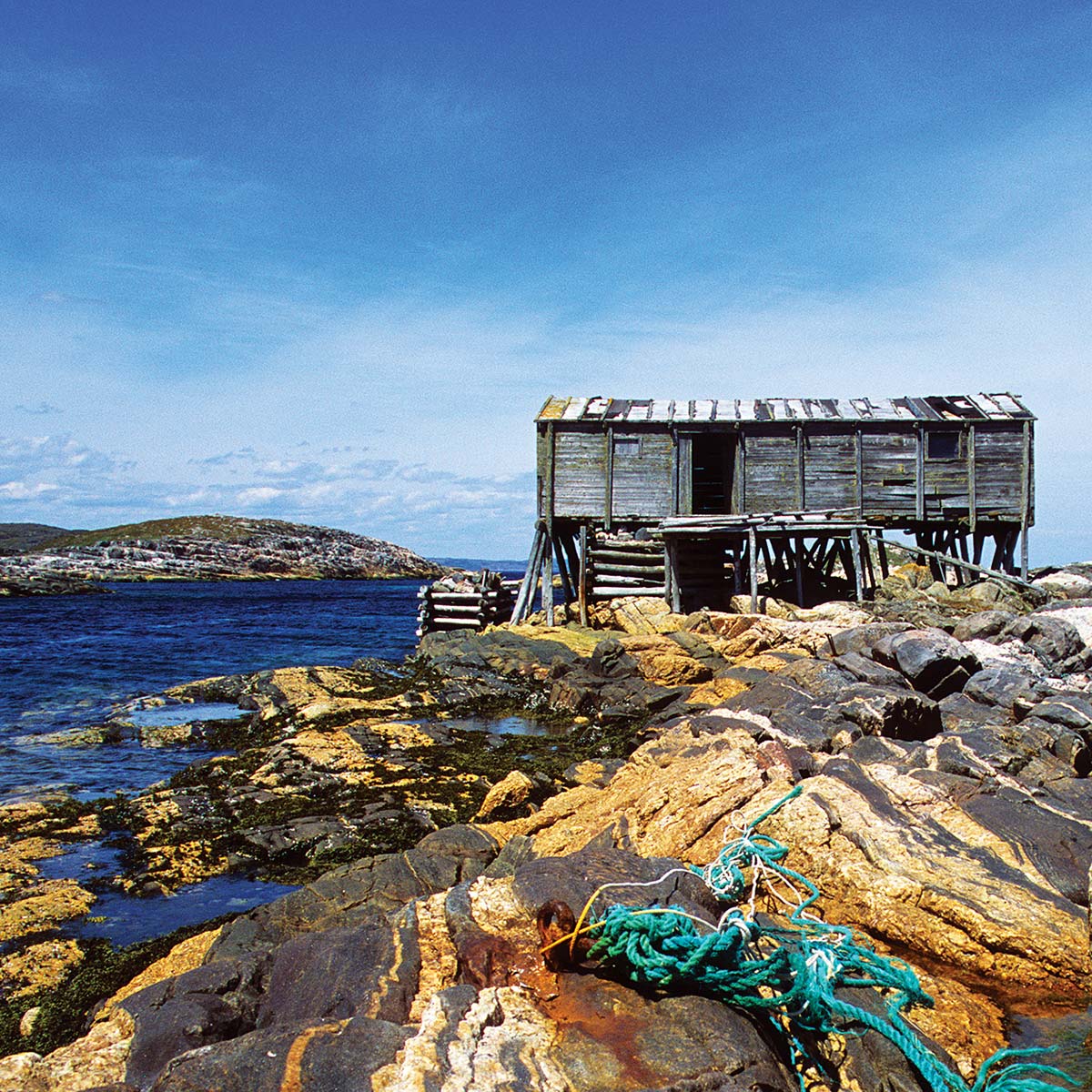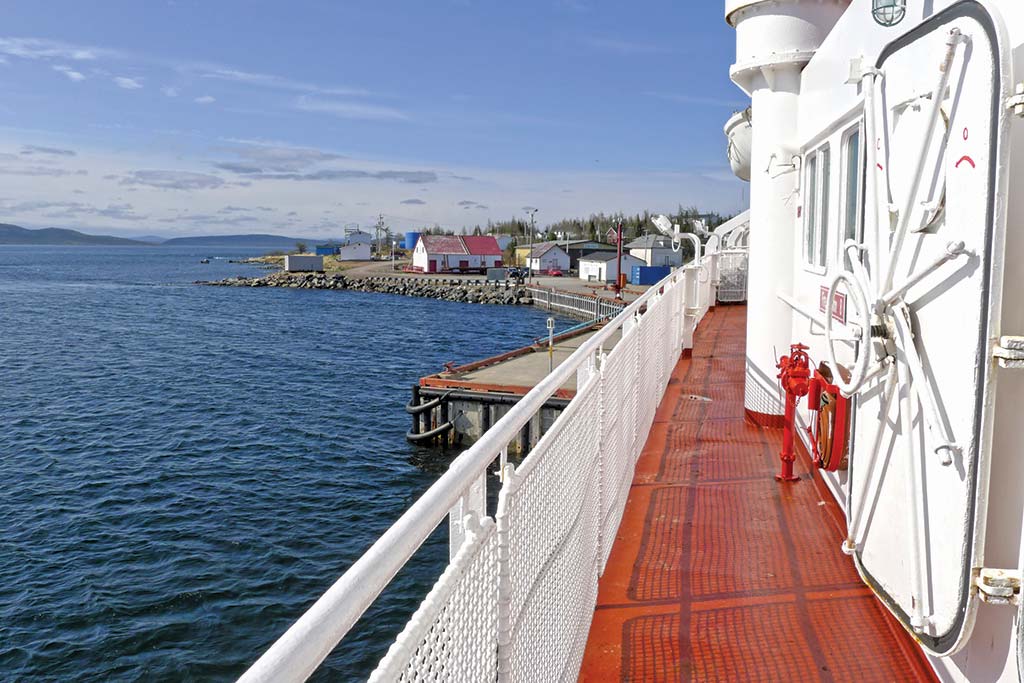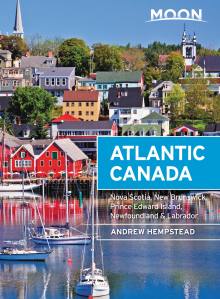Visiting Labrador’s Far North Coast
Labrador’s northern coast evokes images of another world. It’s the Labrador you might imagine: raw and majestic, with the craggy mountain ranges of Torngat, Kaumajet, and Kiglapait rising to the north.
The 1763 Treaty of Paris ceded the Labrador coastline to Britain’s Newfoundland colony, but the imprint of European architecture only reached the northern seacoast when the Moravians, an evangelical Protestant sect from Bohemia, established mission stations with prefabricated wooden buildings in the early 19th century. It is in these remote north coast villages—Rigolet, Postville, Makkovik, and Nain—that the original inhabitants, the Inuit, have settled. Few aspects of these towns have changed over the last century, and the lifestyle of northern peoples here remains traditional.

Access to Labrador’s north coast is by air or sea. The communities are linked to the outside world by Air Labrador (709/753-5593 or 800/563-3042) from Goose Bay, or by a cargo and passenger ferry that takes two days to reach its northern turnaround point, Nain. Riding the ferry, the MV Northern Ranger, is a real adventure. The one-way fare for an adult between Goose Bay and Nain is $185. A single berth in a shared cabin costs $90, while a private cabin costs from $320-650 s or d. For more information, call 800/563-6353. The website www.labradorferry.ca lists a schedule and prices.
Makkovik
After stopping at Rigolet, the MV Northern Ranger starts its long haul through open ocean, reaching Makkovik (pop. 400) 18 hours after leaving Goose Bay. The ferry makes a 90-minute stop on the way north and a three-hour stop on the return journey.
Makkovik was first settled in the early 1800s by a Norwegian fur trader; the Moravians constructed a mission here in 1896. Today this two-story building hold the White Elephant Museum (709/923-2425, July-Aug. Daily 1pm-5pm, or by appointment). Local shops such as the Makkovik Craft Centre (709/923-2221, call for hours) sell Inuit crafts, including fur caps, boots and mittens, parkas, moose-hide moccasins, and bone and antler jewelry.
Right on the water, the Adlavik Inn (7 Willow Creek Ln., 709/923-2389, $120 s, $150 d) has the only five guest rooms in town, so call ahead if your itinerary includes an overnight stay in Makkovik. Rooms have TVs and phones, and meals are served in an adjacent dining room.

Hopedale
About 110 nautical miles north of Makkovik and 122 miles short of Nain, the MV Northern Ranger makes a two-hour stop at Hopedale, just enough time to go ashore and visit the 1782 Hopedale Mission National Historic Site (709/933-3864, adult $5), containing the oldest wooden frame building east of Québec. Here, a restored Hudson’s Bay Company storeroom has been converted into a museum; other site highlights include huts, a residence, and a graveyard. It generally opens whenever the ferry is in town.
Accommodations are provided at Amaguk Inn (3 Harbour Dr., 709/933-3750), which charges $159-209 s or d for its 18 rooms. Meals are available at the inn for both guests and nonguests.
Nain and the Far North
With stunning coastal scenery, stops at remote villages, and the chance to see whales and icebergs, the long trip north aboard the MV Northern Ranger ferry is a real adventure, but after two days on board, the captain’s announcement of imminent arrival in Nain, administrative capital of Nunatsiavut, is welcome. In the early 1900s, an epidemic of Spanish flu—introduced from a supply ship—destroyed a third of the indigenous population on the northern coast. The Inuit who survived resettled at Nain, which now has a population of just over 1,000 and is the northernmost municipality on the Labrador coast. Life is rugged this far north—electricity is provided by diesel generator; fuel and wood are used for domestic heat; local transportation is by boat in the summer and snowmobile in the winter. The only roads are within the town itself.
For an overnight stay, there’s just one option, the Atsanik Lodge (Sand Banks Rd., 709/922-2910; $155 s, $165 d). Each of the 25 rooms has cable TV, a phone, and a private bathroom. The lodge also has a lounge, restaurant, and laundry. Other town services include a couple of grocery stores, a post office, and a takeout food joint.
If you’ve arrived on the ferry, you’ll have just three hours ashore to explore the town before the return journey. The alternative is to take the ferry one way and an Air Labrador (709/753-5593 or 800/563-3042) flight the other. The one-way fare to Goose Bay is around $480.
Voisey’s Bay
Prior to the cod-fishing moratorium, the fishing industry dominated Labrador’s Far North Coast, but now mining at Voisey Bay, 35 kilometers south, appears to be the economic engine of the future. It is home to the world’s largest known deposit of nickel and copper. The main processing facility was completed in early 2006, and now around 6,000 tons of nickel and copper concentrate are mined daily by over 400 workers.
Hebron Mission National Historic Site
Labrador’s northernmost remaining Moravian mission is protected at Hebron Mission National Historic Site, on the shores of remote Kangershutsoak Bay, 140 nautical miles north of Nain. Building began on the mission complex, including a church, residence, and store, in 1829. The mission remained in operation until 1959. Nature Trek Canada (250/653-4265) can make a stop here on its custom guided tours along the northern Labrador coastline.
Torngat Mountains National Park
Established in 2006 as part of the Nunatsiavut land claim, the remote wilderness of Torngat Mountains National Park protects 9,700 square kilometers of the remote coastline and rugged Torngat Mountains at the northern tip of Labrador. Glaciation dominates the park’s geology; its mountains are separated by deep fiords and lakes that have been carved by retreating glaciers, many of which are still present in pockets scattered through the park. The entire park is above the tree line, so instead of trees, its valleys are carpeted in a variety of tundra vegetation, including wildflowers, which cover large expanses during the very short summer season. Huge herds of caribou migrate across the park’s interior, while polar bears are common along the coast.
Unless you are a long-distance kayaker, the only way to reach the park is by charter flight from Goose Bay to Saglek and then a boat transfer into the park. Flights and all ground services are arranged by The Torngats (855/867-6428). Owned by a branch of the Nunatsiavut government, and with a season extending from mid-July to early September, this company’s on-site camp is at the south end of the park. Although used mostly by park staff and researchers, the facility also offers a variety of services for park visitors. Expect to pay around $4,000 for flights from Happy Valley-Goose Bay, the boat transfer, tent accommodation for four nights, meals, and limited guiding.
The main park office (709/922-1290; Mon.-Fri. 9am-4:30pm) is in Nain, although the best source of information for planning your trip is www.pc.gc.ca/torngat, where you can download a visitors’ guide and hiking maps.
